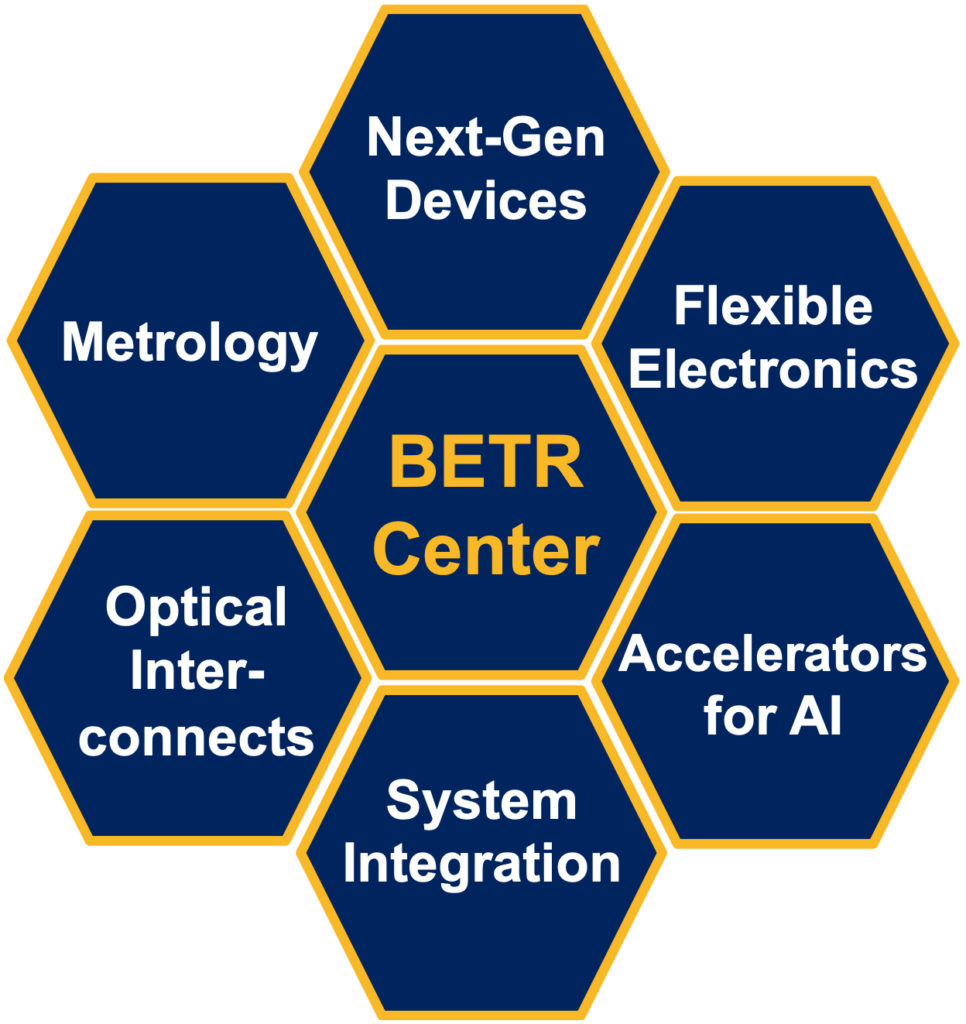Text
break

Text
BETR Center Research
The goal of the BETR Center is to provide solutions for driving innovation in materials, processes and solid-state devices to enable future ubiquitous information systems. Research activities are motivated by the following three main challenges for ambient intelligence to become a reality.
Looming Power Crisis for Computing
Electricity consumed by computing devices has increased exponentially with the proliferation of information and communication technology. To avoid a power crisis in the future, fundamentally new concepts for energy-efficient logic switches and on-chip communication are needed. Breakthroughs in solid-state science and technology, innovations in circuit design, and system architecture will be necessary to avert a power crisis for computing.
Advent of the Internet of Things
The Internet of Things era of ubiquitous computing, wherein electronic devices are pervasive and wirelessly networked with access to cloud computing requires heterogeneous integration to diversify functionality and mechanical flexibility in mobile devices. For these to be affordable, new manufacturing techniques must be developed through interdisciplinary research into novel tools, processes, and materials that are compatible with low-cost plastic substrates.
Proliferation of Big Data Applications
“Big Data” has become the main driver for advances in memory technology and high-performance computing with increasing need for storing and processing large data sets in real-time to derive actionable information. Hardware innovations (including non-von-Neumann architectures) and new computational algorithms and software systems will be needed to meet the demand within reasonable energy and cost constraints.
BETR Center Research Thrusts
Finding solutions to these grand challenges requires a concerted effort across disciplines and between academic and industrial researchers. In response, the BETR Center assembled a diverse group of UC Berkeley professors from electrical engineering, computer science and materials science, working with industry researchers, to build the technological foundation for future electronic devices and information systems. The BETR Center research teams are organized in six distinct, but highly collaborative, research thrusts (Figure 1): (1) Next-Generation Devices, (2) Flexible Electronics, (3) Accelerators for AI, (4) System Integration, (5) Optical Interconnects, (6) Computational Imaging.